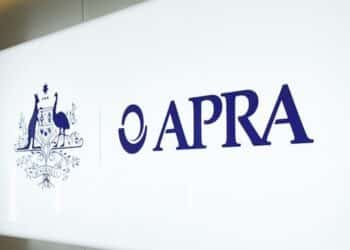The chief executive officer of the Financial Advice Association Australia (FAAA), Sarah Abood, contends that amending statements of advice (SOAs) can alleviate the scarcity of affordable advice left by the banks’ exit from the financial advice space, enabling firms to serve a broader market.
Speaking to ifa, Ms Abood highlighted that the segment of the market seeking simple, low-cost advice is currently underserved.
“No one has effectively been operating in the simple, low-cost end since the banks exited advice, so it’s a segment of the market that is not being serviced at all. This [changes to SOAs alongside other QAR measures] would enable businesses to start serving that segment of the market,” Ms Abood said.
“Whether existing adviser will do that or not is absolutely up to them. There are a whole range of different business models out there, but the point is that it opens up the possibility and it’s a possibility that doesn’t exist right now.”
Last week, in announcing the first tranche of legislation related to the Quality of Advice Review (QAR), the Minister for Financial Services, Stephen Jones, said his red tape reduction agenda will make a “meaningful” difference in freeing advisers from the regulatory purgatory they’ve endured for years.
“The overwhelming majority of this is about financial planners and the people who are individually advised. For their client group, there should be a capacity for them to produce advice more efficiently. If it’s more efficient, then there should be cost savings in that,” the minister said.
“Advisers have been saying for some time now, ‘If you reduce the red tape, we’ll be able to provide more affordable services’. We’re going to reduce the red tape, over to you.”
However, industry consensus suggests that the initial measures fall short in effectively lowering the cost of advice. Specifically, the absence of changes to SOAs, identified as a crucial component by both advisers and associations, represents a significant gap in the initial legislation.
“SOAs would be a game changer in terms of dropping the cost to provide advice,” Ms Abood said.
“The market will respond in different ways. Some of us may well reduce prices, some may not, what reducing the cost to provide advice does though is it opens up the opportunities for firms to come in that maybe aren’t working in this space right now.
“I’ve often said that we don’t have an H&R Block for advice and part of the reason is that it’s so expensive to provide even very basic advice to consumers that that model is just effectively not in existence in advice. But if we lower the cost to provide advice, we open up competition.”
Regarding the absence of SOAs from the first tranche of legislation, Ms Abood said that while she is disappointed, it’s crucial to view this as a “delay and not a no.” She also revealed that confidential discussions about the revamped SOAs are currently underway behind closed doors.
Ms Abood pointed out that the challenge with SOAs lies in their interconnected influence on other facets of advice regulation, including the Code of Ethics and the best interest provisions. However, she assured that her interactions with the minister have revealed a “very genuine” intent to address and resolve this issue.
“These changes will still be made, we just found that we need longer to get these changes right is very much what Treasury is saying. And the intent is that it is better to get it right than put draft legislation forward that’s not going to solve the problem,” Ms Abood said.




After seeing the initial draft legislation, I am gravely concerned that the ‘new SOA’ will end up being more prohibited than the current legislation we work with.
I.e. – product issuers have to voluntarily opt-in to the standardised fee consent form. Every one had their chance to have their say – there was multiple layers and opportunities for consultation. We need mandatory adoption, not voluntary opt-in.
You cannot look at SOAs (variable) cost in isolation, because the overheads of small business practices are high and when I next pay ASIC’s $33,670 2022-23 levy (no benefit, non-productive waste), it takes away the cash held in reserve for the Excess on our Professional Indemnity insurance policy if there was to be more than 1 client making a PI insurance claim. So when I pay ASIC’s levy, at the same time, I need to lodge a Breach Report to ASIC. Directors knowingly need to adhere to their practice governance responsibilities.
If you have ten advisers on your books and don’t have enough cash to fulfill the excess of a PI claim, I’d seriously be worried about the sustainability of your business at large
Unfortunately providing “advice” is only one component of the overall support package provided to most clients. Unless the ridiculous Annual Fee Renewal Consent Forms are changed to a one-off only form, (in order to charge say $30 a month service support past 12 months ongoing), 2 million consumers will remain orphaned on Fund Platforms, unable to access personal retail advice support. In stark contrast, in every other western nation/jurisdiction (UK, USA, Switzerland, NZ & Canada) such Annual Free Renewal Red tape simply does not exist and consumers are able to access ongoing service support without any problems.
Ensombl researched this is the biggest bottleneck in both cost efficiency and time, the sooner logical brief CAR style SoAs are legislated the better. I just hope they don’t require re-stating everything already captured prior to the SoA like currently, because afca will consider the whole file.
Since when does a $500 – $600 SOA that may reduce to $300 significantly reduce the cost of advice which KPMG has pinpointed at $5,700 or so? Since when is the advice that is developed all got to do with the cost of the production of the SOA document only? Reducing the red tape around the SOA is going to do nothing unless all the other elements (data, process and best interest duty) is sorted out. This is scapegoating at is finest
Exactly. I charge $600 (inclusive of GST) for an SOA, including modelling and sensitivity analysis for an SMSF with Limited Recourse Borrowing strategy, and my client charges $7,000 up front. On that basis, how is it reducing the $600 for the SOA going to change anything?
Maybe I’m missing something but to think reducing the SOA’s down to whatever the number of pages ends up is going to dramatically reduce the cost to serve / cost to the clients just doesn’t make sense. So simpler SOA’s (where many utilise a paraplanner) may reduce that cost from now on average $300 – $900 down to what $200 – $600 hmmm …….
There is significant time in vetting, reviewing and instructing the plan; also, a lot of practices acknowledge this as their primary bottleneck. Further, the time capacity and $ can be redirected to further efficiencies. Pretending this doesn’t change a huge degree of the cost to serve is mad. Having logical and swift SoA guidelines that are client-centric and supported by professional judgment are crucial to reducing costs and becoming a profession.
Are you for real? The majority of the cost is the advice itself and other expense aspects, not the SOA itself, even if you include the vetting stage.
Maybe your plans, not all
As a paraplanner you don’t have the same overview of a practice principal and you’re presenting opinion as fact not all practises have similiar operating styles either. What’s quoted is from research and feedback on masse not i dividual and frankly narrowly viewed. Genuinely changing law for clients and advisers not to require litigious verbous or over disclosed SoAs that don’t protect anyone from afca saves a lot of IFAs time and cost
Yes, I’m “for real”.